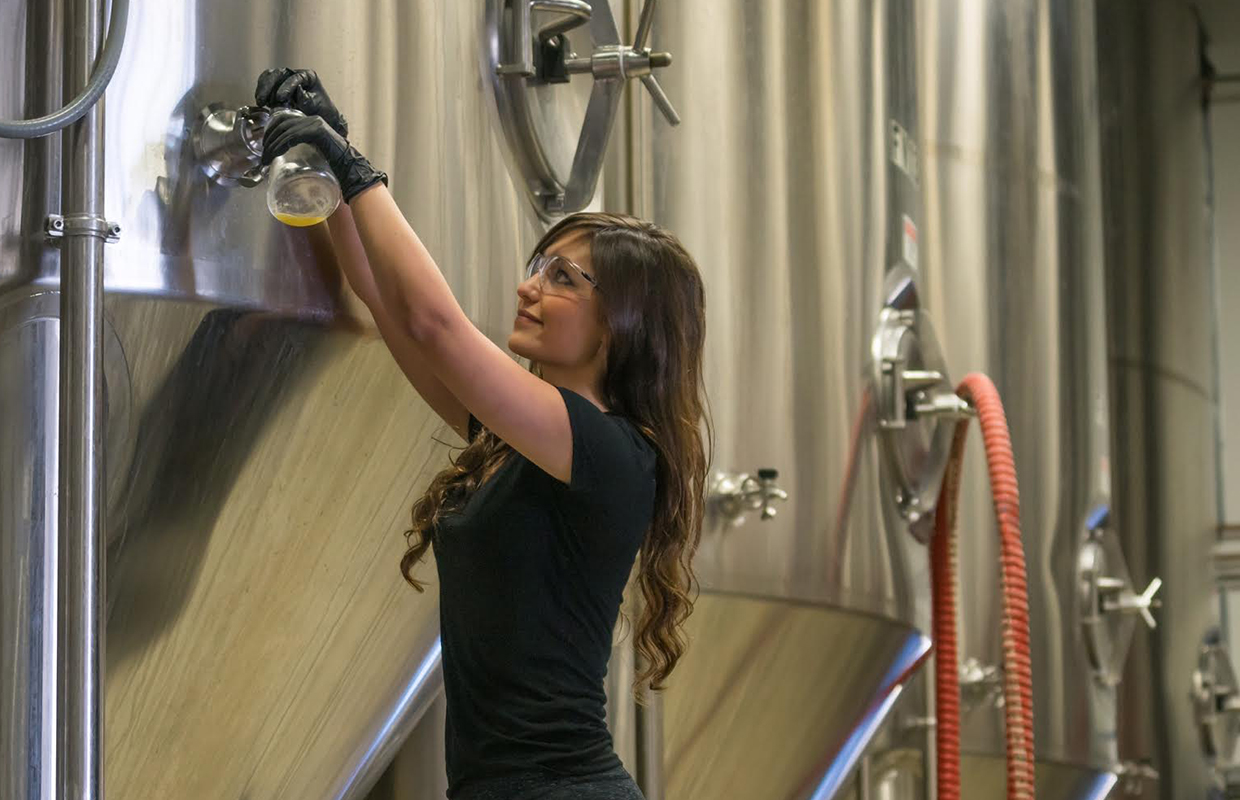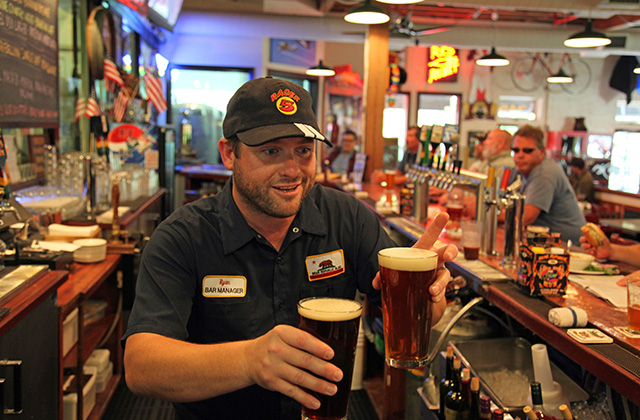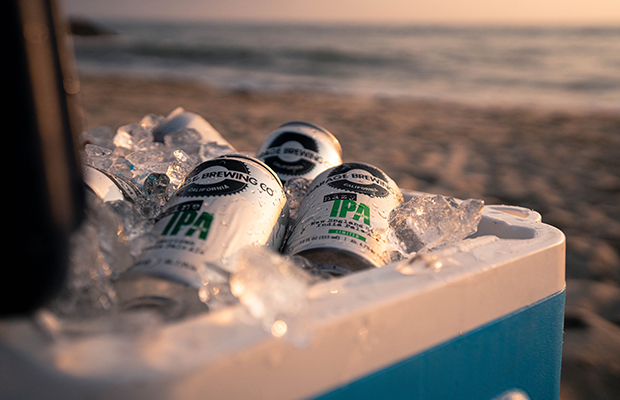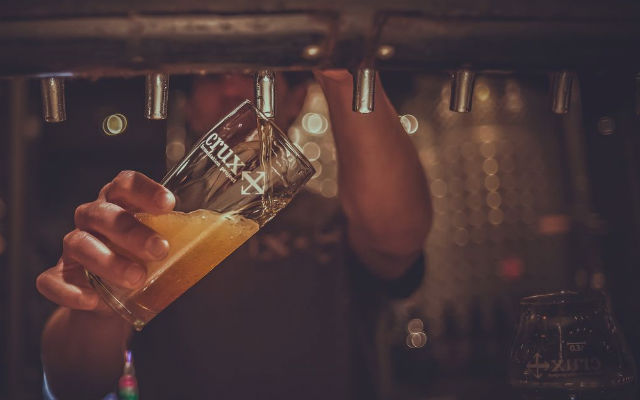
Brendan Arnold, the head brewer for Alternate Ending, felt the New Jersey brewery’s identity with Hazy IPA was a process that took some work.
“Our first few IPAs were brewed with different base malts and hop schedules,” he explained. “We wanted to make a soft balanced IPA and really put some time and discussion into the process. I thought we had a couple of duds but the customers were extremely supportive. In the end, we found our unique way of making these beers and are very proud of them.”
Arnold added that they really dive into details in every aspect of wort production and fermentation as a new brewery looking to compete in a tough market, quality matters.
“Each tank from lauter tun, to boil kettle, to fermenter has specific targets to meet,” he said. “Yeast management and beer maturation time are also very important to us. Quality is always in the details when it comes to great beer.”
Here are some insights from various breweries on where having great quality checks count in creating and maintaining a great product.
In the Brewhouse
The biggest thing is the removal of chlorine, said Perrin‘s John Stewart, and putting in a carbon filter is key.
“A lot of breweries when they start off and they’re smaller you can flash chlorine off in a hot liquor tank and if it’s setting overnight and it’s getting warm they might not run into issues,” he explained to Brewer. “From what I’ve seen as breweries start off, they don’t run into issues. But then as the production ramps up, they’re selling more beer, they get busier then they start to fill their hot liquor tanks up and they’re not giving it that contact time where they were naturally flashing off chlorine and suddenly they’re putting chlorinated water into their product.
“I’ll talk to a guy saying ‘Man it’s like something changed. I don’t know what’s going on with my beer.’ What they’re doing is they’re changing their brewing process because they’ve gotten faster and they’re basically putting chlorinated water into the product whereas if you fill the hot liquor tank up the night before you let that chlorine flash off it wasn’t an issue. Now if they do three or four brews in a single day, they’re not giving it that time. They really need to install a carbon filter to remove that chlorine. When you mix chlorine with dark malts, you get those chloro-polyphenols and you start to get Band-Aid, plastic and electrical tape, and all sorts of off-flavors that can be formed from it.
“So to me, at a bare minimum, I always tell people you’ve got to do something to make sure that the chlorine is being removed.”
Even for breweries that don’t have an advanced lab to track some parts of water testing, municipal water facilities are a great place to reach out for information, Stewart said.
“Another place I always tell people is to talk to their chemical vendors,” he added. “Those vendors will actually do free testing — it’s part of a service for them. So if you’re buying either the chlorine testing material or if it’s just cleaning chemicals, a lot of these chemical companies have the lab in place and it’s just as part of the customer/supplier relationship they’ll do water testing.”
In Packaging
“We need absolutely the lowest TPO numbers and flawless seams,” pointed out Creature Comforts co-founder and Brewmaster Adam Beauchamp. The Athens, Georgia-based facility upgraded to a 250 can-per-minute line (“Top-notch quality typically starts with the larger systems,” he said).
“Ease of maintenance is a big consideration as well as the rate of production,” he added. “Intuitiveness of operation is also critical.“
Iron Horse started with a mobile canner because it was a quick way to get into canning without the massive upfront costs, said head brewer Tyson Read.
“Unfortunately, scheduling becomes a challenge and rapid adaptability to market needs is nearly impossible,” he said. “Pair that with the fact that at some point the volume and the fees make owning your own a viable solution.” Read pointed out that the Washington brewery originally chose a Cask line for their first machine because it was the right speed and it was available (and used, he added).
Looking back, Read said there are features they wished they had and others that they would recommend for anybody looking at canners.
“I wish we had a rotary counter pressure canner,” he said.
He shared that one feature that everyone should require for a canner purchase is cam-driven seamers.
“Do not ever buy a unit with pneumatic seamer operations,” he warned.
In Retail
Heavy Seas‘ QA/QC Lab Team Leader, Megan Schwarz said that brands have a five-month shelf life for all brands and says that is longer than some because of quality checks throughout the process.
“We track fermentation, plate for microbiological contamination, and taste every batch at least three times before it leaves the building,” she said. “Focusing on total package oxygen (TPO) is another huge contributor to keeping beer fresh on shelves.”
Talley said there is no perfect system to always ensure that everything is “in code”, so his team will get back close-dated products from accounts and distributors through whatever means necessary when they know about it.
“We’ve had taproom employees buy back beer from accounts at full retail,” they said. “Typically, the only time we are asked to buy back beer from distributors is during seasonal transition periods because we keep a tight inventory level, from a production standpoint.”
Educating Consumers in the Taproom
In addition to social posts depicting scenes of everyday life around the brewery, much of Bonfire Brewing‘s consumer-facing education on quality comes from its beertenders.
“We place a heavy focus on staff training, and all of our bar staff is proud that their knowledge and expertise extends beyond simply pouring a beer and running a register,” said co-owner Amanda Jessen. “After just a few months on the job, most of our beertenders have assisted with line cleaning regularly, have participated in tasting panels and off-flavor analysis, and have even shadowed our brewers and participated in the brewing process.
“We’ve found great success with this kind of integration across the different areas of our company, resulting in staff that can thoroughly answer questions from customers, and quickly detects any quality issues that may arise.”
The Eagle, Colorado has worked on being committed to transparency from Day 1.
“[It’s] through our voice in social posts and other media, internal company philosophy, and involvement in our community,” Jessen said. “We actually hear very little from customers regarding suspicion or questions about quality, and I believe this is directly related to the efforts we’ve made to build trust among our customers.”
Photo courtesy Upslope Brewing




Be the first to comment